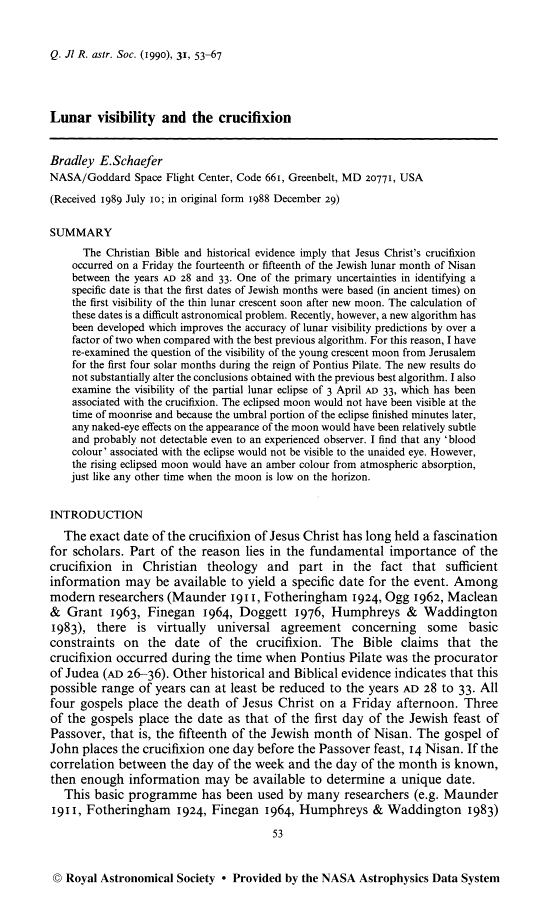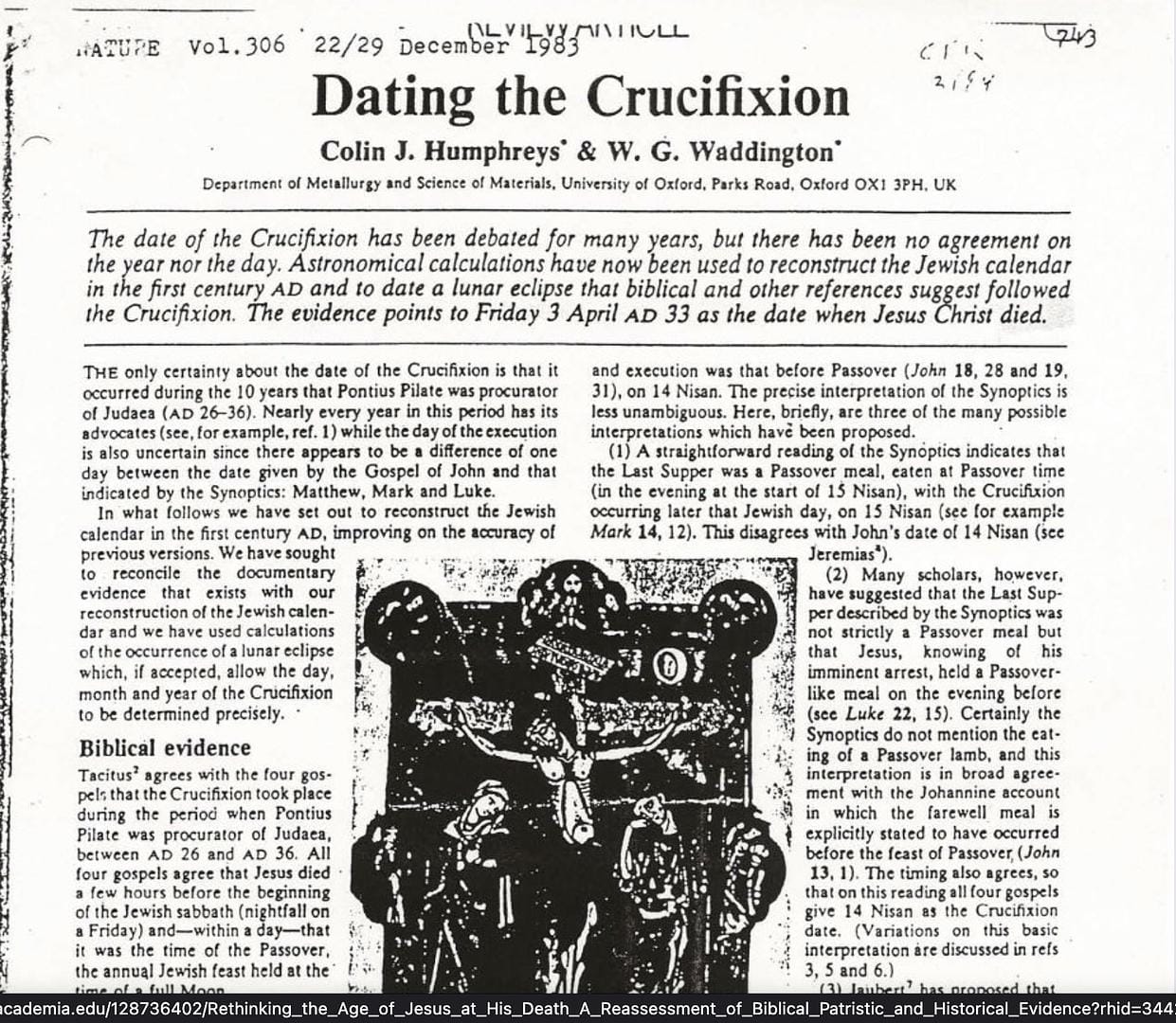On the 1st of March 1990, a research astrophysicist at NASA's Goddard Space Flight Center, Bradley E. Schaefer, published groundbreaking research in the Quarterly Journal of the Royal Astronomical Society, where he confirmed that on April 3rd, 33 A.D., a partial lunar eclipse—a blood moon—rose over Jerusalem. That date? It aligns exactly with what many scholars consider the historical day of Jesus’ crucifixion.

The full article documentation is available in the Harvard archives; see the link below.
https://articles.adsabs.harvard.edu//full/1990QJRAS..31...53S/0000053.000.html
The infographic is sourced from the official NASA website.

What NASA’s data revealed is breathtaking, especially when we take into account the significance of scriptures like



These words, spoken by the apostle Peter on the day of Pentecost, are the fulfillment of the prophecy found in the book of Joel.
Scientific attempts to establish the date of the crucifixion of our Lord and Savior have been aimed and proceeded by notable scientists like Humphreys, C., and Waddington, W., from Oxford University in their work, Dating the Crucifixion.

As the sun set over Jerusalem, the moon rose already in eclipse—blood-red, dimmed by Earth’s shadow.
This astronomical event occurred on Passover, just hours after Jesus had breathed His last on the cross.
The eclipse would have been visible shortly after 6:20 PM, likely seen by witnesses of the crucifixion still in the city.
Though some scholars have debated its exact visibility due to atmospheric refraction and timing, the calculations based on NASA’s Java script eclipse data remain one of the most fascinating intersections of science and Scripture ever uncovered.
For believers, this 1990 discovery doesn’t just mark a date—it illuminates a moment when heaven and earth testified together: the crucifixion of the Lamb of God was not a hidden event, but one witnessed by creation itself.
So…
Did NASA accidentally prove the death of Jesus?
Maybe not intentionally…
But the sky itself may have testified to what happened on that hill called Golgotha.
On the evening of April 3rd, 33 A.D., as the sun set over Jerusalem, a blood-red moon rose—eclipsed by Earth’s shadow. For over three hours, the heavens darkened. Not merely a cosmic event... but a celestial echo of a greater truth: the Lamb of God had been slain. Historians note it lasted around 220 minutes. But believers? They see deeper meaning. Three hours of darkness — one for each nail. The sky preaching what men tried to silence… The Lamb of God is slain as a propitiation for the sins of humanity.






